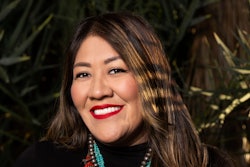A report from the Georgetown University Center on Education and the Workforce (CEW) suggests that diversity gains made at the most selective colleges and universities — even with race-conscious affirmative action — have been marginal.
 Dr. Jeff Strohl
Dr. Jeff Strohl
The report is a retrospective analysis of the changing demographics at selective and open-access institutions from 2009 to 2019; researchers ended their analysis in 2019 to account for changing enrollment patterns that resulted, in part, from the COVID-19 pandemic. It comes less than a year after the U.S. Supreme Court ruling in Students for Fair Admissions, Inc. v. President and Fellows of Harvard College ended race-conscious affirmative action.
The CEW report finds that Hispanic/Latino, Black/African American, and American Indian/Alaska Native students collectively composed 37% of the college-age population but just 21% of selective college enrollments in 2019. Hispanic/Latino enrollment almost doubled Hispanic/Latino, increasing by about 50,000, at selective institutions from 2009 to 2019. Black/African American students only increased their enrollment by 5,000 at selective universities, while American Indian/Alaska Native student enrollment declined.
But white and Asian American/Pacific Islander students, accounting for 60% of the college-age population, represented 73% of enrollments at selective institutions in 2019. White student in enrollment remained stable between 2009 and 2019, despite experiencing a population decline of 12%, while the Asian American/Pacific Islander student population grew by 55% abutting a smaller enrollment increase at 34%.
“Open-access institutions educate the vast majority of college students but, unfortunately, have the fewest resources and the lowest success rates,” said Strohl. “This chasm of inequity undermines the goal of the American postsecondary system to serve as an engine of opportunity for those who need it most.”
CEW report co-author and policy analyst, Emma Nyhof, said enrollment disparities between selective and open-access institutions matter because outcomes matter.




















